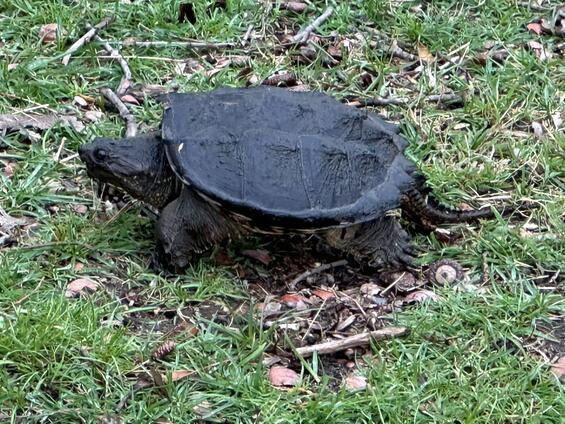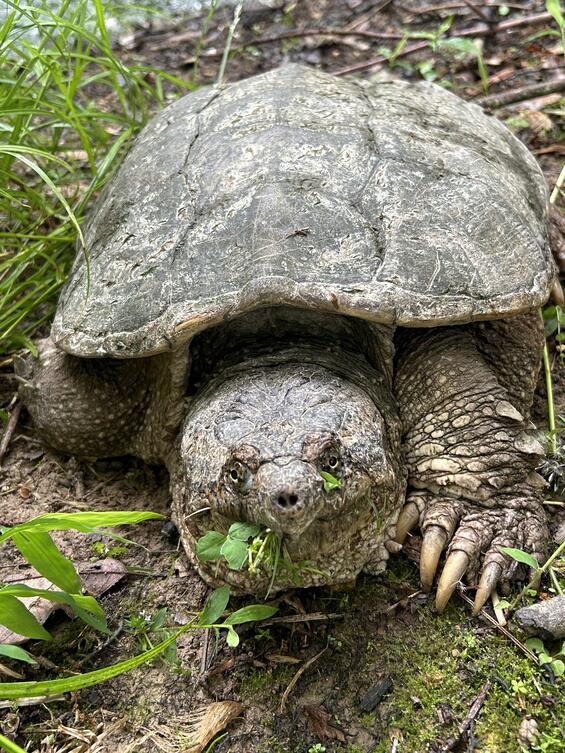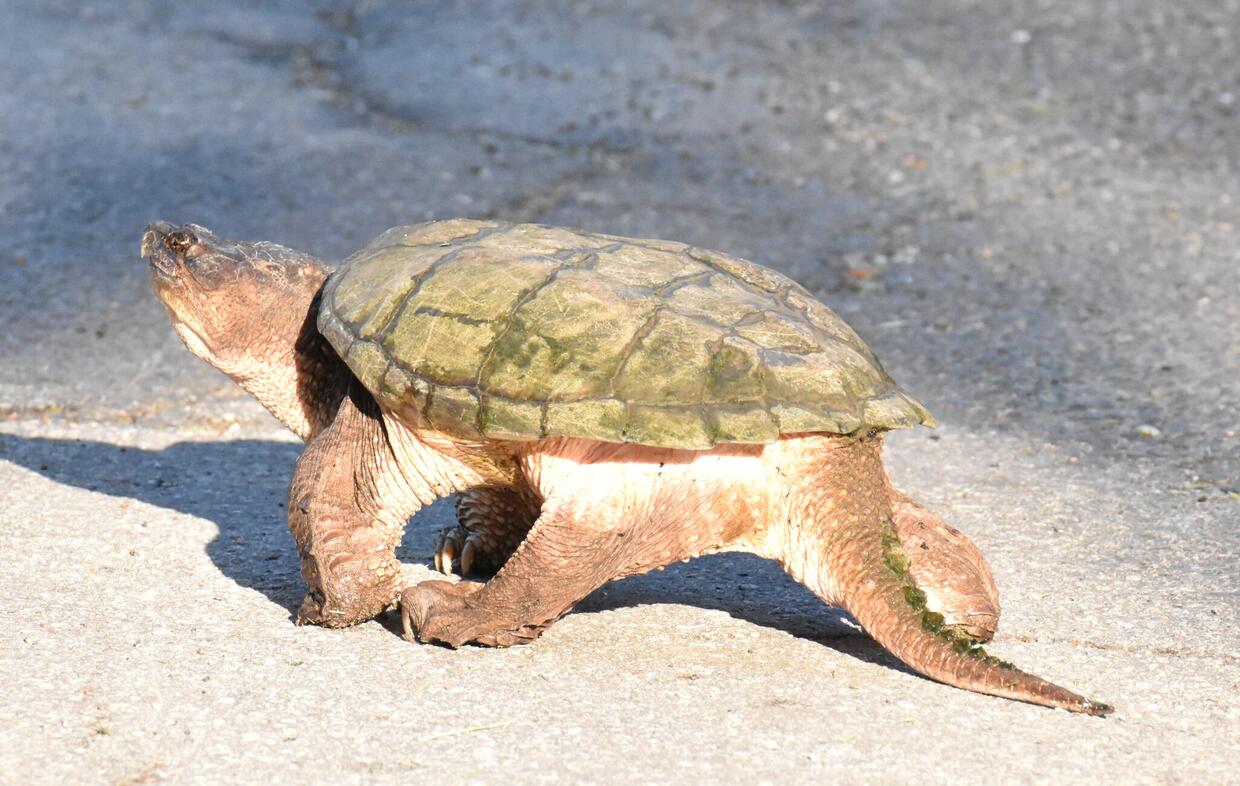Fast facts
Common name: Snapping turtle
Scientific name: Chelydra serpentina
Range in MA: Found across the entire state
Fun fact: The current world record, wild-caught snapper of 76.5 pounds was caught in Massachusetts.
Identification tip: Snapping turtles have a long tail with saw-toothed keels.
Description

Snapping turtles are the largest freshwater turtle species found in New England. They are very common and are highly aquatic. Their carapaces are light brown to almost black, often covered with algae, and have a serrated rear edge. A snapping turtle’s plastron is tan or yellowish and considerably smaller than the carapace. They have a notably long tail that is as long as the shell, with saw-toothed keels.
Habitat
Snapping turtles can be found in almost any wetland habitat; from brackish tidal rivers to high elevation beaver ponds. Highest concentrations of this species are usually associated with river and lake environments with muddy bottoms and lots of vegetation, but snappers also commonly appear in trout streams, swamps, small ponds, even vernal pools.
Life cycle and behavior

Snappers spend most of their time submerged and rarely bask above water. The time most people encounter them is during the egg-laying season in late May and June, when females may travel considerable distances from water to nest. Nesters are attracted by the smell of disturbed earth, and often deposit their large clutches of 20-40 spherical eggs in piles of loam or recently tilled gardens and lawns. Unvegetated, sandy areas around parking lots and roadsides are also favored. Eggs take about 90 days to hatch; young may overwinter in the nest and emerge the following spring. Snappers grow very rapidly when young, and may live for 50 years or more. They are formidable biters when on land or removed from water, but are typically docile when submerged in their element and are normally not a danger to swimmers. They feed on a host of aquatic plants, invertebrates, fish, carrion, and waterfowl. Unlike most turtles, male snappers grow considerably larger than females, and territorial battles between males (always in water) are common. Snappers are commonly harvested for their meat.
